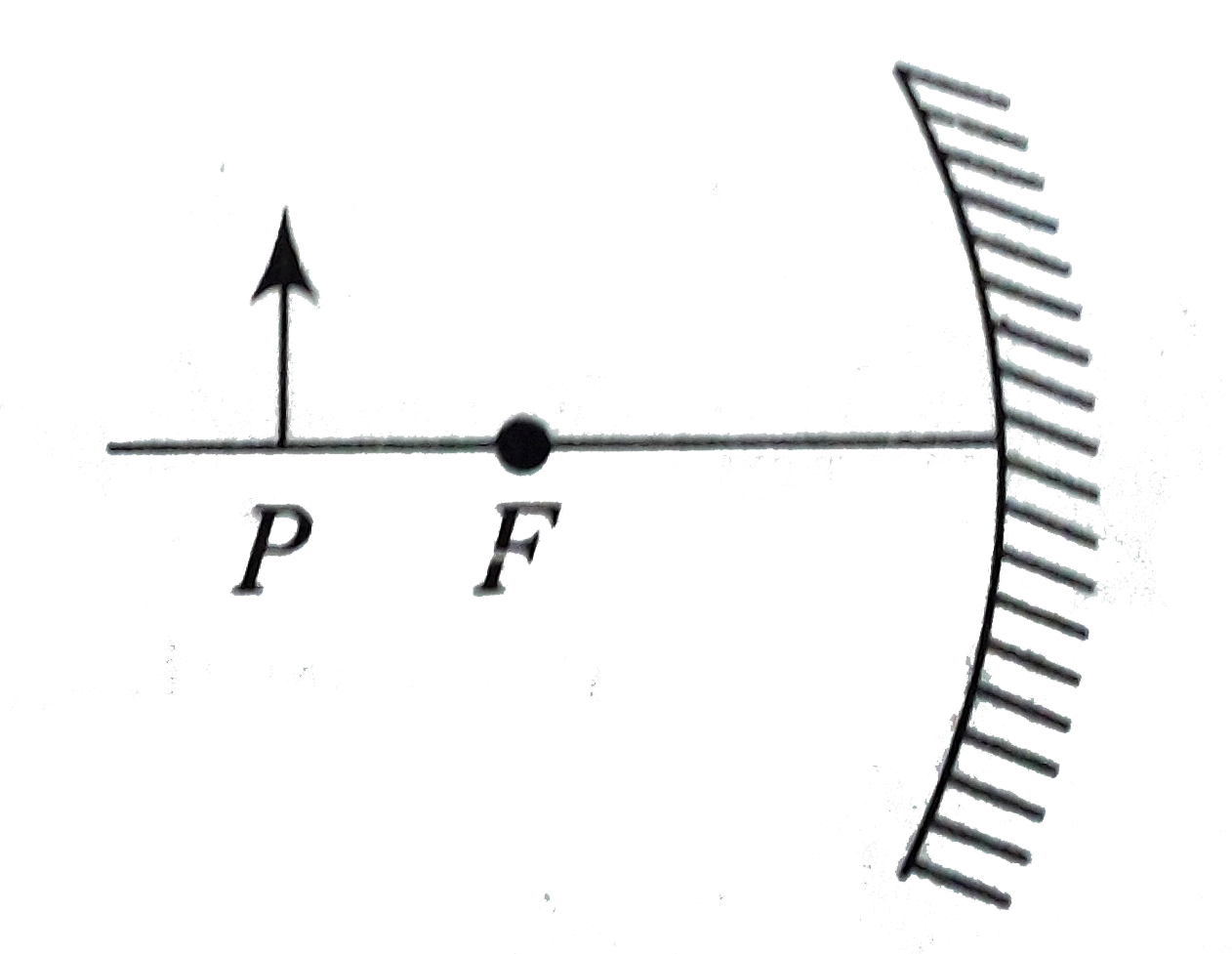State mirror formula. How does 'f' change when object distance 'u' from the mirror is changed?
Step-by-Step Solution:
1. State the Mirror Formula:
The mirror formula relates the object distance (u), the image distance (v), and the focal length (f) of a mirror. The formula is given by:
1f=1v+1u
2. Understanding the Variables:
- u = Object distance from the mirror (always taken as negative for real objects in mirror conventions).
- v = Image distance from the mirror (positive for real images and negative for virtual images).
- f = Focal length of the mirror (positive for concave mirrors and negative for convex mirrors).
3. Effect of Changing Object Distance (u):
When the object distance u is changed, the focal length f remains constant. This is because the focal length is a property of the mirror itself, determined by its shape and radius of curvature.
4. How Image Distance (v) Changes:
As u changes, the image distance v will also change according to the mirror formula. Specifically, if u increases (the object moves away from the mirror), the value of v will adjust to maintain the equality in the mirror formula.
5. Conclusion:
- The focal length f does not change when the object distance u is altered.
- The image distance v changes in response to changes in u while keeping f constant.
The mirror formula relates the object distance (u), the image distance (v), and the focal length (f) of a mirror. The formula is given by:
1f=1v+1u
- u = Object distance from the mirror (always taken as negative for real objects in mirror conventions).
- v = Image distance from the mirror (positive for real images and negative for virtual images).
- f = Focal length of the mirror (positive for concave mirrors and negative for convex mirrors).
When the object distance u is changed, the focal length f remains constant. This is because the focal length is a property of the mirror itself, determined by its shape and radius of curvature.
As u changes, the image distance v will also change according to the mirror formula. Specifically, if u increases (the object moves away from the mirror), the value of v will adjust to maintain the equality in the mirror formula.
- The focal length f does not change when the object distance u is altered.
- The image distance v changes in response to changes in u while keeping f constant.
Similar Questions
Knowledge Check
For a concave mirror of focal length f, image is 2 times larger. Then the object distance from the mirror can be
Af2B3f2Cf4D4f3An object is at a distance of 10 cm from a concave mirror and the image of the object is at a distance of 30 cm from the mirror on the same side as that of the object. The radius of curvature of the concave mirror is
A+15.0 cmB+7.5 cmC−7.5 cmD−15.0 cmA concave mirror forms an erect image twice the size of a object. The object distance from the mirror is ______
Af2B2fC3f2D2f3
(a) State the relation between object distance, image distance and focal length of the mirror. Give the New Cartesian Sign Conventions used.
(b) A concave mirror forms a virtual and erect image at a distance of 30 cm from the mirror when the object is held at 10 cm in front of the mirror. Calculate focal length of the mirror.
View SolutionAn object is placed at a distance of 10 cm from a concave mirror. When the distance of object from the mirror is decreased to 6 cm, the image gets 2 times magnified than that in first case. Calculate the focal length of the mirror.
View SolutionFigure shows an object located at point P, 0.25 meter from concave spherical mirror with principal focus F. The focal length of the mirror is 0.10m How does the image change if the object is moved from point P toward point F?

View SolutionAn object is placed at a distance of 30 cm from a concave mirror and its real image is formed at a distance of 30 cm from the mirror. The focal length of the mirror is
View SolutionA short linear object of length b lies along the axis of a concave mirror or focal length f at a distance u from the pole of the mirror. The size of the image is approximately equal to
View Solution

